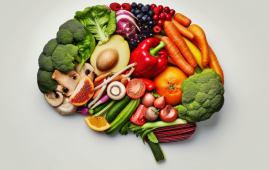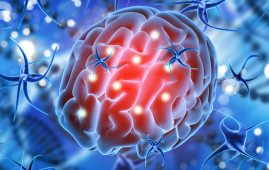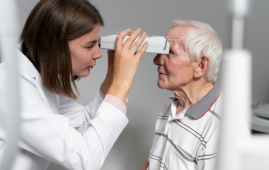

A recent investigation, as detailed in Nature Communications, conducted an exhaustive genome-wide examination, employing CAGE-sequencing on the facial mesenchyme of human embryos. This was then compared with genes associated with facial appearance by GWAS, aiming to unravel the intricate development of craniofacial skeletal structures and enhance treatments for congenital craniofacial malformations. Background Facial recognition stands as a pivotal facet of most human social communications, while congenital craniofacial malformations significantly influence these interactions. The viscerocranium holds vital structures and sustains sensory organs. The dynamic interaction among genetic, environmental, and epigenetic factors shapes the craniofacial skeleton.
Alcohol intake during pregnancy serves as a recognized factor impacting facial morphogenesis. The viscerocranium originates from neural crest cell (NCC) descendants in all Gnathostomata, inclusive of mice, zebrafish, and humans.
Various NCC-derived mesenchymal subpopulations aggregate and differentiate into osteoblasts and chondrocytes. The configurations of the mesenchymal chondrogenic condensations delineate the forms of craniofacial skeletal elements.
A convoluted interplay among the facial ectoderm, placodes, NCCs, neuroepithelium, and endoderm orchestrates precise viscerocranium sculpting, involving ongoing expression alterations in myriad genes.
Furthermore, the proper migration and differentiation of NCCs, alongside their interactions with adjacent tissues, engage conserved signaling pathways.
These signaling pathways and associated morphogens constitute a framework accountable for viscerocranium sculpting. Nonetheless, the capacity of signaling pathways to discern and amalgamate environmental cues/signals into facial morphogenesis remains undisclosed.
Nutritional sensing by the mTORC1 pathway boasts high evolutionary conservation. Furthermore, shifts in mTORC1 activity can influence the configuration of craniofacial structures.
The Study and Findings The current inquiry postulated and assessed that mTORC1 signaling might mediate the interplay between environmental cues and craniofacial morphogenesis. Initially, human embryonic facial material underwent sequencing to pinpoint actively transcribed enhancers implicated in facial development from gestational weeks 3 to 12.
Enhancers underwent cross-verification and enrichment against previously identified ones. The team observed enrichment in phosphoinositide-3-kinase (PI3K)/ protein kinase B (AKT)/mTORC1/autophagy pathway components.
Subsequently, the mTORC1 signaling pathway underwent manipulation during facial development to explore the mechanisms underpinning craniofacial shaping.
To this end, mTORC1 signaling underwent activation by crossing tuberous sclerosis 1 (Tsc1)-floxed mice with SRY-box transcription factor 10 (Sox10)-CreERT2 strain, where a tamoxifen pulse on embryonic day 8.5 (E8.5) triggers recombination in NCCs.
Micro-computed tomography images divulged altered thickness of skeletal elements and minor developmental anomalies by E17.5.
Previously, researchers demonstrated that craniofacial shape in mice gets established at mesenchymal condensation. Embryos underwent staining on E12.5 to depict the form of mesenchymal condensations.
The overall shape remained conserved, albeit thicker nasal capsule compartments surfaced. Upon Tsc1 ablation, nasal chondrocyte clones manifested as sizable bulky clusters with extensive dispersion and misalignment.
These findings suggested that mTORC1 pathway activation modulated chondrogenic condensation and clonal arrangement. Subsequent analyses hinted that the mTORC1 pathway participated in craniofacial shaping prior to or during chondrogenic condensations.
Next, mTORC1 underwent inhibition using rapamycin in pregnant dams on E10.5; this resulted in a marginally elongated snout in embryos by E17.5.
Additionally, reduced thickness of chondrogenic mesenchymal condensations was noted on E12.5. Subsequently, the team delved into whether these mTORC1 effects were conserved among species.
Accordingly, zebrafish were selected and their larvae exposed to rapamycin at various developmental stages. Rapamycin exposure before or during chondrogenic condensation did not impact the overall facial skeleton size, albeit the cartilaginous structures underwent narrowing.
Further, when exposed pre-condensation, a slight curvature of the ethmoid plate emerged, alongside repositioning of assorted cartilage elements.
The researchers then scrutinized whether alterations in mTORC1 activity via diets with varied protein levels might influence offspring craniofacial shaping. Hence, pregnant mice consumed isocaloric diets with 4%, 20%, or 40% protein, commencing E6.5.
The lowest and most marked mTORC1 activity transpired in embryos from low- and high-protein diet recipients.
Maternal diet protein levels impacted Meckel’s cartilage length and the nasal capsule’s width and length in embryos. Nasal capsule cartilage thickness surged with heightened protein intake.
Conclusions In essence, the study delineated the mechanisms of mTORC1-dependent shaping of craniofacial skeletal elements in mice and zebrafish, primarily coinciding with chondrogenic mesenchymal condensations, with fine-tuning during chondroprogenitor intercalation.
Furthermore, maternal diet protein content modulated mTORC1 activity in mouse embryos. Overall, the outcomes furnish insights into craniofacial shaping and its phenotypic plasticity.
For more information: The level of protein in the maternal murine diet modulates the facial appearance of the offspring via mTORC1 signaling, Nature Communications, https://doi.org/10.1038/s41467-024-46030-3
more recommended stories
 Brain Pulsations Linked to High BMI
Brain Pulsations Linked to High BMIAccording to a new study from.
 Brain Age Estimation: EEG Advancements in Neurology
Brain Age Estimation: EEG Advancements in NeurologyTo estimate brain age using EEG.
 Unlocking Ketogenic Diet for Epilepsy Management
Unlocking Ketogenic Diet for Epilepsy ManagementExploring the Therapeutic Potential of Ketogenic.
 Senescence in Neurons: Findings
Senescence in Neurons: FindingsBased on a new study by.
 Balanced Diet Linked to Enhanced Brain Health
Balanced Diet Linked to Enhanced Brain HealthDiet and brain health are strongly.
 Acid-Reducing Drugs Linked to Higher Migraine Risk
Acid-Reducing Drugs Linked to Higher Migraine RiskIndividuals who utilize acid-reducing drugs may.
 Atrial Fibrillation in Young Adults: Increased Heart Failure and Stroke Risk
Atrial Fibrillation in Young Adults: Increased Heart Failure and Stroke RiskIn a recent study published in.
 Neurodegeneration Linked to Fibrin in Brain Injury
Neurodegeneration Linked to Fibrin in Brain InjuryThe health results for the approximately.
 DELiVR: Advancing Brain Cell Mapping with AI and VR
DELiVR: Advancing Brain Cell Mapping with AI and VRDELiVR is a novel AI-based method.
 Retinal Neurodegeneration in Parkinson’s Disease
Retinal Neurodegeneration in Parkinson’s DiseaseBy measuring the thickness of the.

Leave a Comment